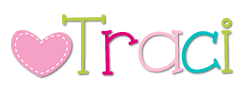I've also included clickable links, where applicable, for you to easily retrieve or look up the resource(s) that I'm using.
To elaborate on each section...
Holidays/Themes
These are nice reminders of what holidays and celebrations are coming up for the month to keep me on my toes and ensure I don't forget anything. My scope & sequence is broken down into 4 main blocks.
1. Reading/Comprehension
2. Writing/Grammar
3. Math
4. Health/Social Studies/Science/Social Skills
Reading/Comprehension (centers)
Reading instruction is done in centers. Your reading and phonics programs will vary depending upon your availability of resources and your students. So for this reason, I did not include clickable links here. Here are some of the reading programs that I love and use with my students and new this upcoming year, I will be using the "Wilson Reading System" with several of my students. I've heard lots of great things about it and I love that it is designed for grades 2-12. Other programs I use and recommend are:
Writing/Grammar (whole group)
My writing instruction is done in whole group. Writing is my favorite subject to teach, so it comes naturally, but I also use the "Step up to Writing" model. I love that this system uses a stoplight method and color codes writing, making it SO easy to teach anyone to be a good writer. I've used this program for over 10 years and have had a lot of success with it! It's fabulous for special education!Another resource I use for my beginning and struggling writers that I forgot to link are these writing frames.
As for grammar, I pull from here and there and also love Steck-Vaughn's Language series. It looks like they may have changed the cover since I purchased mine, but the link above is the link for these workbooks.
I'm also currently working on grammar task boxes that will be posted in my store hopefully by the end of this week!
Math (centers)
Math instruction is done in centers. Many of my students take the alternate assessment, and my state provides NV Academic Content Connectors for these students that are linked to the Academic Content Standards. My math scope is based off of the third grade NV connectors. I also throw in lots of opportunities for life skills math like money, which is not included in these connectors and I believe is such an important life skill for our students.
Health/S.S./Science/Social Skills (whole group)
These subjects are taught in whole group and are rotated each day/week/month. So for instance, I may teach Science on week 1 and 2, Health on week 3, and Social Skills on Week 4. Then, the next month, I'll hit Social Studies. I typically do a social skills lesson at least one day a week though. This is also the block we squeeze in cooking activities. These subjects all share this block. I've made most all of these links clickable for you to go right to the resource that I use. For Social Studies I began using Cara Carroll's first grade S.S. curriculum last year and found it to be a perfect fit for my students that are in grades 3-5.
I used Tara West's Firstie Science Curriculum last year and also found it to be a perfect fit for my 3-5 kiddos. And it's super easy to adapt and modify for those needing a little more challenge or even less of a challenge. And of course we are obsessed with science experiments, so we also make time to squeeze in fun science experiments in between.
This year I'll be using Tara West's Social Skills program. It looks fabulous, is low prep, and targets 75 different social skills that I'll use in the order as I see fit. Again, although designed for kinder and 1st, it's perfect for my 3-5 self-contained students that are mostly working at this level.
Also, for social skills, every Friday we do what I call "Group Games." This is where we play structured games together like kickball, Mother May I, etc. to learn how to interact, take turns, good sportsmanship, and how to follow the rules of a game. We rotate indoor games with outdoor games every other week.
Also, at the end of every day we have 20-30 minutes of free social time before going home.
Special Activities
These are just special activities I like to do every year and to keep me on track. Last year, we totally spaced making our tie-die t-shirts for field day until it was too late and I was bummed! Now that I've added this section to my scope, hopefully this won't happen again!Life Skills you ask? Life skills are integrated throughout with our S.S., social skills lessons, class jobs, morning work/meeting, cooking lessons, etc. I currently have one student that is on a functional curriculum and his scope and sequence does look a little different. That is still a work in progress, but I use "A Work in Progress" and "FISH" as a guideline. I am hoping to finalize a scope & sequence for this area in the near future.
Hopefully this scope and sequence will fit the needs of your students and ease your planning this upcoming school year. You can download the version with clickable links here or a blank editable version here.
Want to save this for later?? Pin it here!















